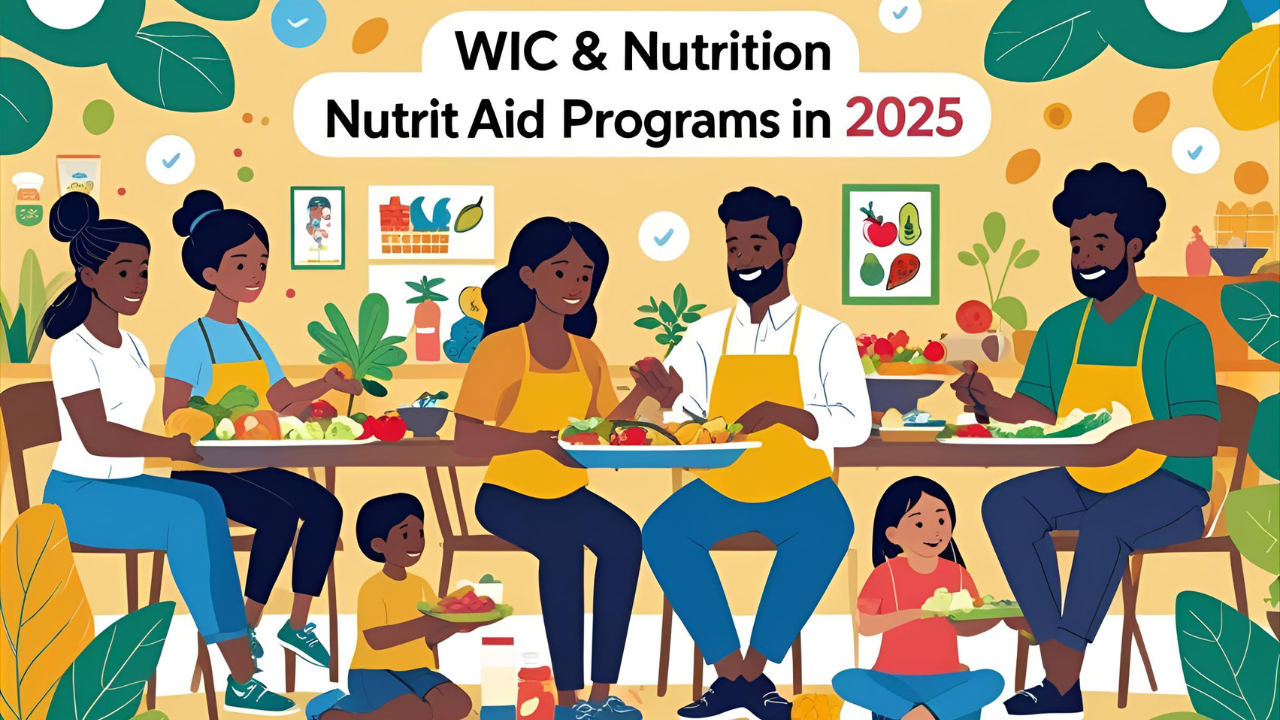Access to nutritious food is essential for health and development, especially for pregnant women, infants, and young children. The WIC program—short for Women, Infants, and Children—is a critical nutrition assistance initiative that supports millions of families across the United States. If you’re wondering who qualifies for WIC and where to apply, this guide will walk you through everything you need to know in 2025.
Table of Contents
- What Is the WIC Program?
- Who Is Eligible for WIC?
- What Benefits Does WIC Offer?
- How to Apply for WIC Benefits
- Where to Find WIC Offices
- Tips for a Successful Application
- Final Thoughts: Supporting Healthy Beginnings
1. What Is the WIC Program?
The Special Supplemental Nutrition Program for Women, Infants, and Children (WIC) is a federally funded program administered by each U.S. state. It provides nutritious food, health education, breastfeeding support, and referrals to healthcare and social services.
WIC is designed to improve pregnancy outcomes, child development, and long-term health for eligible low-income families. Established in 1974, WIC has been instrumental in reducing childhood malnutrition and ensuring children get a healthy start in life.
2. Who Is Eligible for WIC?
WIC is available to certain categories of people who meet specific income and health criteria. In general, you may qualify if you are:
- A pregnant woman
- A postpartum woman (up to 6 months after delivery)
- A breastfeeding mother (up to 1 year after giving birth)
- An infant under 1 year
- A child under age 5
Additional Eligibility Criteria
To qualify, you must also meet the following:
- Income Limits: Your household income must be at or below 185% of the federal poverty level. For a family of four in 2025, that’s around $55,500/year (subject to updates).
- Nutritional Risk: A healthcare professional must determine that you or your child are at nutritional risk. This may include conditions like anemia, low birth weight, or poor eating habits.
- Residency: You must reside in the state where you apply for WIC.
Even if you receive Medicaid, SNAP (food stamps), or TANF, you are automatically considered income-eligible for WIC in most cases.
3. What Benefits Does WIC Offer?
WIC goes beyond just food. It provides a comprehensive package of support for families during the critical early years.
a. Nutritious Food Packages
Participants receive monthly benefits to purchase approved healthy foods such as:
- Whole grains (brown rice, oats)
- Fresh and frozen fruits and vegetables
- Milk, cheese, yogurt
- Eggs, beans, and peanut butter
- Baby food and infant formula (if needed)
b. Breastfeeding Support
WIC encourages breastfeeding and offers:
- Access to lactation consultants
- Breast pumps (when needed)
- Peer counseling and educational materials
c. Nutrition Education
Participants receive free nutrition counseling tailored to their specific health needs and family lifestyle.
d. Health and Social Services Referrals
WIC connects families to services such as immunizations, prenatal care, dental care, and parenting support.
4. How to Apply for WIC Benefits
The application process is simple and straightforward. Here’s how to apply:
Step 1: Find a WIC Clinic
Visit the official WIC website or search your state’s health department site to find the nearest clinic.
Step 2: Schedule an Appointment
Call or use an online form to schedule an in-person or virtual appointment.
Step 3: Prepare Documentation
Bring documents such as:
- Proof of identity (ID, birth certificate)
- Proof of residency (utility bill, lease)
- Proof of income (pay stubs, Medicaid/SNAP enrollment)
- Immunization records for children
Step 4: Attend Your Appointment
A WIC staff member will assess your eligibility, which includes a short health screening and a review of your documents.
Once approved, you’ll begin receiving WIC benefits either via WIC checks, a WIC EBT card, or vouchers, depending on your state.
5. Where to Find WIC Offices
WIC services are offered in local health departments, community clinics, hospitals, mobile units, and nonprofit health centers.
To find a WIC clinic near you:
- Use the WIC Locator tool on the official USDA site
- Call 1-800-522-5006 (or your state’s WIC hotline)
- Visit your county health department
Many clinics also provide services in multiple languages and offer assistance with transportation.
6. Tips for a Successful Application
To avoid delays and ensure a smooth enrollment:
- Call ahead to confirm the documents needed
- Arrive early to appointments
- Ask questions about what foods are covered and how to use your benefits
- Keep track of appointment schedules and recertification dates
- Stay engaged—attend nutrition classes and take advantage of support services
Remember, WIC is not just a food program — it’s a long-term resource for improving your family’s health and well-being.
7. Final Thoughts: Supporting Healthy Beginnings
WIC remains one of the most effective and life-changing public assistance programs in the U.S. It provides critical support for mothers and children when they need it most — during pregnancy, infancy, and early childhood.
If you or someone you know fits the eligibility criteria, don’t hesitate to apply. The process is easy, the benefits are impactful, and the support goes far beyond groceries. With WIC, you’re not just getting food — you’re gaining a healthier, stronger future for your family.

